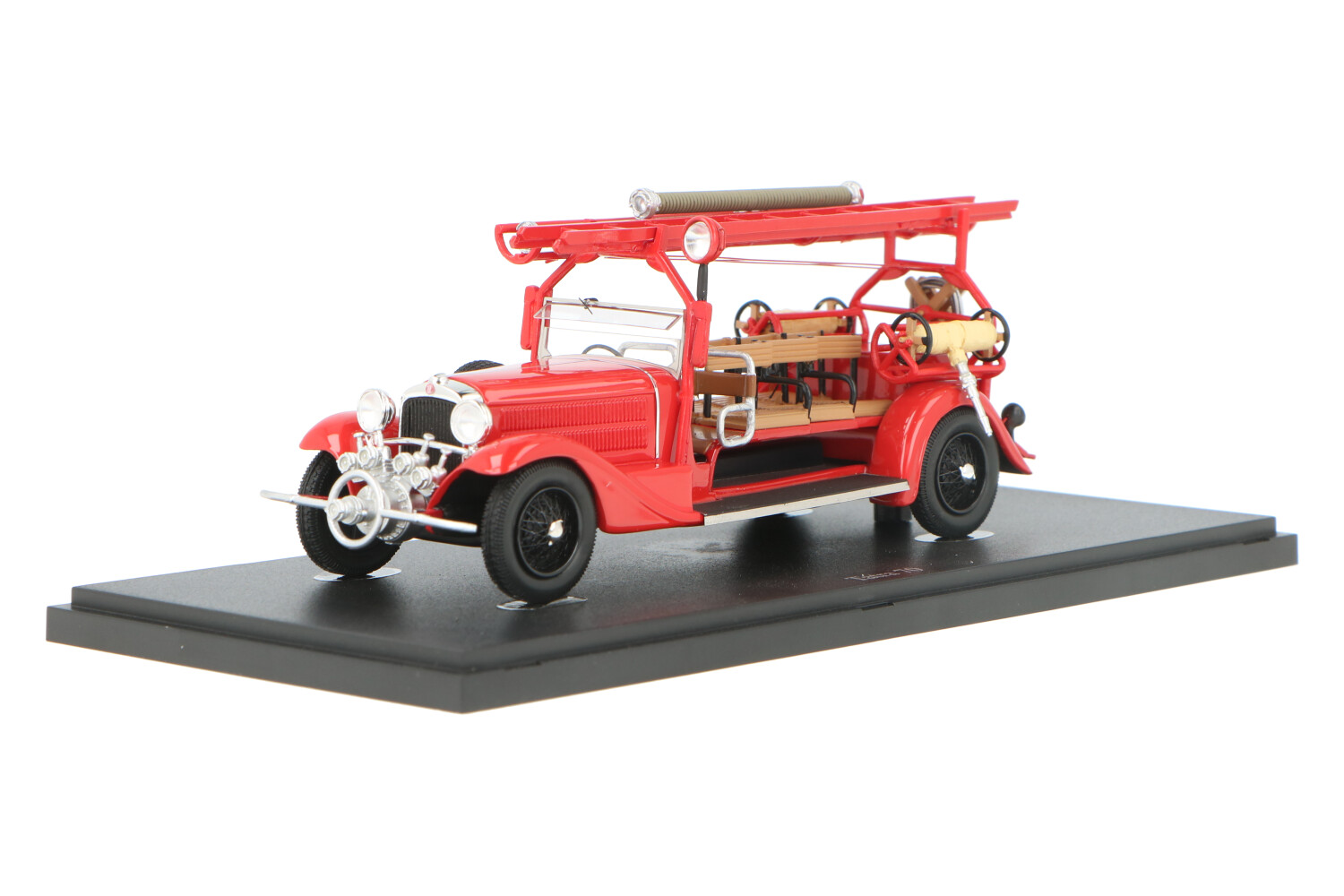Tatra 70
/images/ideal.png)
/images/creditcards.png)
/images/paypal.png)
/images/klarna.png)
/images/applepay.png)
/images/in3.png)
All the unique features of this scale model
1:43
Resin
12014
Delivered in original factory packaging
7423355638651
Details of this scale model
- Limited edition 333
- Model year 1931
- Doors cannot open
- Hood cannot open
- Trunk cannot open
- Wheels are not movable
The Mutated
The Tatra 70 was first offered for public sale in the year of 1930. It served as a complimentary alternative to the regal Type 80 limousine. Clearly, there are similarities between the two types that influenced the production of the Type 70. The same tubular frame was used as were the suspension, wheels, and a number of other parts that became common to both Tatra types. The Type 70 was equipped with a smaller, inline, water-cooled six-cylinder engine that displaced 3.4 liters. This engine produced 65 horsepower and enabled the Type 70 to achieve a speed of 110 km/h, nearly 65 miles per hour. From 1931 through October of 1932, exactly 50 examples of the Tatra Type 70 were produced. It is not known whether the management of Tatra viewed these sales as a success. Afterwards the factory introduced a larger engine with 3.8 liters displacement under the designation Type 70a. By August of 1936, Tatra had produced 70 vehicles of the new type. Not all variants of the Type 70 and 70A were equipped with classic Tatra bodywork. The overall rugged construction of the Type 70/ 70A was recognized by municipalities seeking to purchase new firefighting apparatus.
Objectively looking at this specific vehicle, the details of a production four-door convertible are obvious. The framing around the windshield is identical to Tatra convertibles and with a bit of intuition, it is easy for your mind to "fill in" the four-door bodywork. The original doors were removed during the conversion to a fire fighting vehicle to allow quick entry and exit as well as minimize time required to unload firefighting equipment.
Two hose reels; one on each side of the body at the rear, provided coiled hose to attack the fire. They were connected to the built-in water pump at the front of the chassis. The pump was connected to the engine to provide water pressure.
It is not known who many firefighting conversions of the type 70 and 70a were built back then.

/images/tatra5065856.jpg)
/images/tatra5065858.jpg)
/images/tatra5065850.jpg)
/images/tatra5065852.jpg)
/images/tatra5065867.jpg)
/images/tatra5065868.jpg)
/images/tatra5065845.jpg)
/images/tatra5065859.jpg)
/images/tatra5065861.jpg)
/images/tatra5065855.jpg)
/images/tatra5065866.jpg)
/images/tatra5065848.jpg)
/images/tatra5065865.jpg)
/images/tatra5065846.jpg)
/images/tatra5065849.jpg)
/images/tatra5065863.jpg)
/images/tatra5065853.jpg)
/images/tatra5065854.jpg)
/images/tatra5065862.jpg)
/images/tatra5065864.jpg)
/images/tatra5065851.jpg)
/images/Helmen_EN.jpg)
/images/Footer_R_Filmstv_EN_A.jpg)
/images/tatra5065856.jpg)
/images/tatra5065858.jpg)
/images/tatra5065850.jpg)
/images/tatra5065852.jpg)
/images/tatra5065867.jpg)
/images/tatra5065868.jpg)
/images/tatra5065845.jpg)
/images/tatra5065859.jpg)
/images/tatra5065861.jpg)
/images/tatra5065855.jpg)
/images/tatra5065866.jpg)
/images/tatra5065848.jpg)
/images/tatra5065865.jpg)
/images/tatra5065846.jpg)
/images/tatra5065849.jpg)
/images/tatra5065863.jpg)
/images/tatra5065853.jpg)
/images/tatra5065854.jpg)
/images/tatra5065862.jpg)
/images/tatra5065864.jpg)
/images/tatra5065851.jpg)